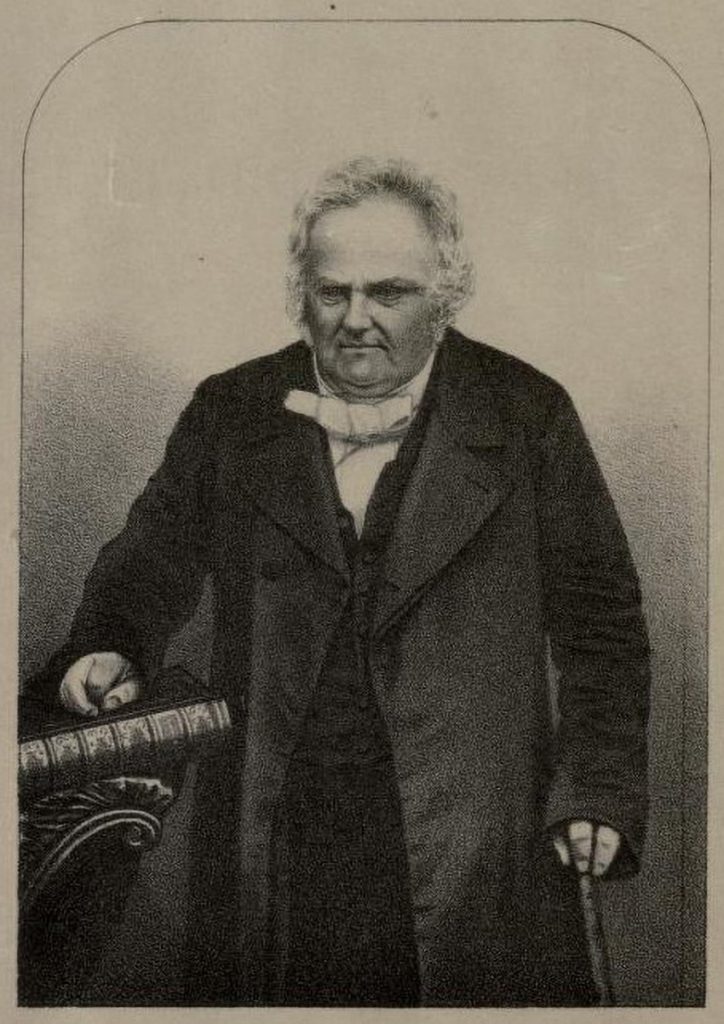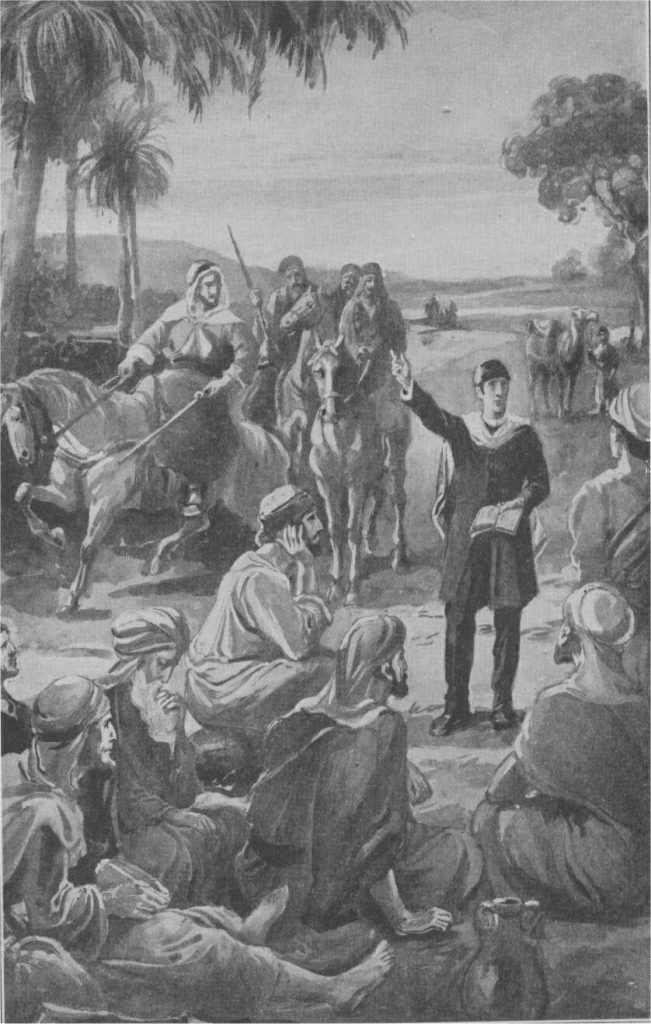Dr Joseph Wolff is arguably the most notable character of Isle Brewers. As Vicar of Isle Brewers he was responsible for the rebuilding of the church, rectory and a school for the village.

Early life
Dr Joseph Wolff became the Vicar of Isle Brewers in 1847. After an extraordinary life of mission and adventure he built the present church on higher ground which had been donated for the purpose by General Sir John Michel. He also built the rectory now known as The Glebe and built and sustained the village school.
Dr Wolff was born a Jew, son of a Rabbi, in what is now Germany in 1795. He must have been quite a precocious child since he started questioning the Jewish faith which upset the family and he was eventually turned out at the age of 11. During his subsequent wanderings he sometimes earned his lodgings teaching Hebrew at monasteries. He eventually arrived in Munich aged 15 where he attended high school. After more wanderings he was finally baptised at the Benedictine monastery in Prague. He became something of an academic and eventually spoke fifteen languages.
Determined to become a missionary he enrolled at the College of Propaganda, the Catholic Missionary training school in Rome. He found some items of the Catholic faith not to his liking and had a somewhat bumpy ride with several clerics. Before long he was expelled from the school. One such argument was overheard by Henry Drummond, a wealthy banker associated with the Society for Promoting Christianity among the Jews. Drummond gave him an invitation to London.
Having been forcibly evicted he went to Vienna where he entered another monastery. This was not a success and luckily he met an English lady in the street who was looking for him with a letter from Drummond summoning him to London. He arrived in July 1819, aged 24. Drummond’s society sent him to Cambridge to study theology. He was re-baptised into the Church of England.
Missionary travels
Financed by Drummond, he made his first missionary journey in 1821 to convert Jews living in the Middle East to Christianity. He visited Egypt, Palestine, Cyprus, Syria, Lebanon, Turkey and Mesopotamia. He was the first missionary from the West to preach the Gospel in Jerusalem, which later led to the setting up of the Anglican Bishopric there in 1841. He would preach to anyone who would listen, often in their own language. One of his notable achievements was to persuade the children of Christian priests murdered by Turks on Cyprus to be sent to England to be under the protection of Drummond. On one of his adventures he joined a caravan of Turkish merchants heading for Baghdad which became lost. Seeking help from the local Kurds he started preaching the Gospel to them. They were so infuriated they gave him 200 lashes on the soles of his feet. Being unable to walk he was tied to the back of a mule for the rest of the way to Baghdad.

During one of his returns to London he met and married Georgina, daughter of Lord Orford, in 1827. They moved to Malta and he resumed his missionary journeys. He set off for Bokhara intending to search for the Ten Lost Tribes of Israel. After several severe mishaps and much hardship he eventually reached India and was shown hospitality in Cawnpore by Lieutenant Arthur Connolly. He finally returned to his wife and son in 1838, after being away for some five years.
On a lecture tour of America with no formal credentials from the Church of England he was ordained a deacon by the Bishop of New Jersey. On a visit to Ireland, Trinity College Dublin conferred on him an honorary Doctorate of Laws and he was ordained a Priest by the Bishop of Dromore. Georgina, however, wanted a more settled life, persuaded him to take a parish and they moved to Yorkshire, first to Linthwaite, then on to Hoyland.
His wanderlust was not satisfied. He heard of the plight of Arthur Connolly who had been captured by the Amir Nasrullah of Bokhara while trying to rescue his brother officer Colonel Stoddart. Joseph Wolff, seeing his chance to repay Connolly’s hospitality then mounted a new expedition to determine the fate of Stoddart and Connolly, knowing the area better than anyone else with having visited Bokhara on his earlier travels. To make a greater impression he left England with full canonical dress complete with red doctor’s hood and black shovel hat and bible in English and Hebrew, styling himself ‘the Grand Dervish of England, Scotland, Ireland, Europe and America’.
Although his earlier visit had been fraught with hardship and hostility this time he was now recognised from his earlier visit and was well received at the towns and villages he passed through. On entering the Ark of Bokhara he was initially well received by the Emir Nasrullah of Bokhara but who told him Stoddart and Connolly had been executed. He then fetched up against Abdul Samut, head of the Amir’s army, who had been the cause of problems on his earlier travels, and whoe put Wolff under house arrest and threatened him with the same fate as the officers. Wolff was saved by the intervention of the Persian ambassador. Fearing Persia more than England,the Emir let him go. This and his earlier adventures had been reported back to England by Reuters so he had now become quite a celebrity.
Incidentally, Samut’s end came when Nasrullah cut him in half with an axe for plotting against him; and on his own deathbed, Nasrullah had his favourite wife stabbed to death in front of him.
Vicar of Isle Brewers
On his return from Bokhara in 1847, he was given the vicarship of Isle Brewers which was then in the gift of General Sir John Michel of Dewlish House and Kingston Russell in Dorset, who had just earned a knighthood in the 1857 Indian Mutiny.
The church at Isle Brewers was situated on land near the river now part of the Mill House grounds. It was of Saxon origin, in very decrepit condition and subject to frequent inundation. He raised the money to build a new church from his lecture tours in England and America, public subscription as well as a large contribution of his own pocket. The architect was C.G.Giles, who designed several London churches and who also rebuilt the Wellington monument on the Blackdown Hills. The new church was consecrated in 1861.
Wolff’s sermons were considered quite extraordinary. To illustrate a point from the Bible he would relate an episode from his travels. These sermons were delivered with such energy that they were described as often more of a performance than a sermon. He was much loved for his kindness and support of the poor parishioners of Isle Brewers where he made sure they had food and coal in winter and paid for the running of the village school.
Wolff had been in ill health for several years and died in the village a year later, on 7th May 1862, aged about 67.
